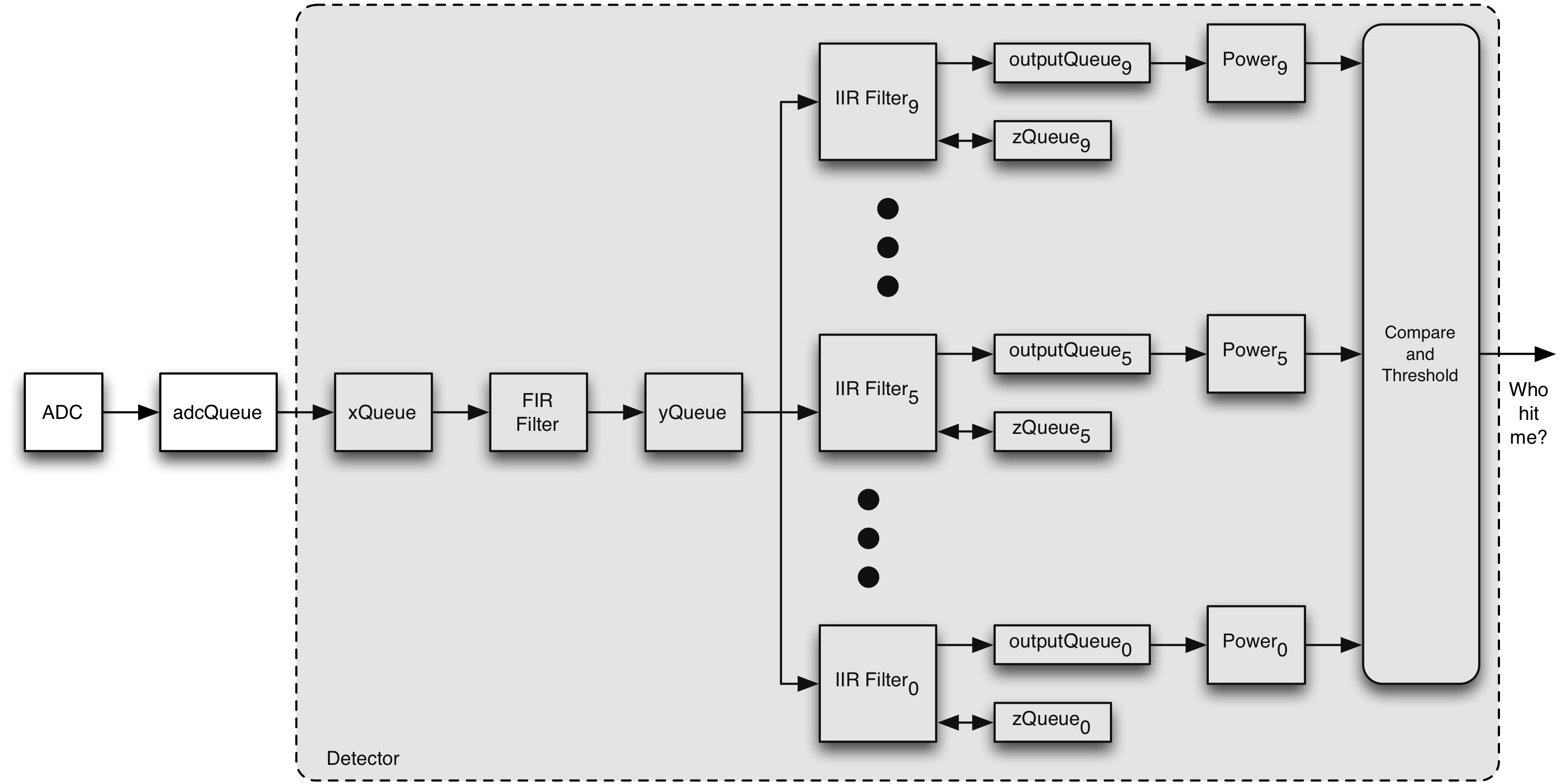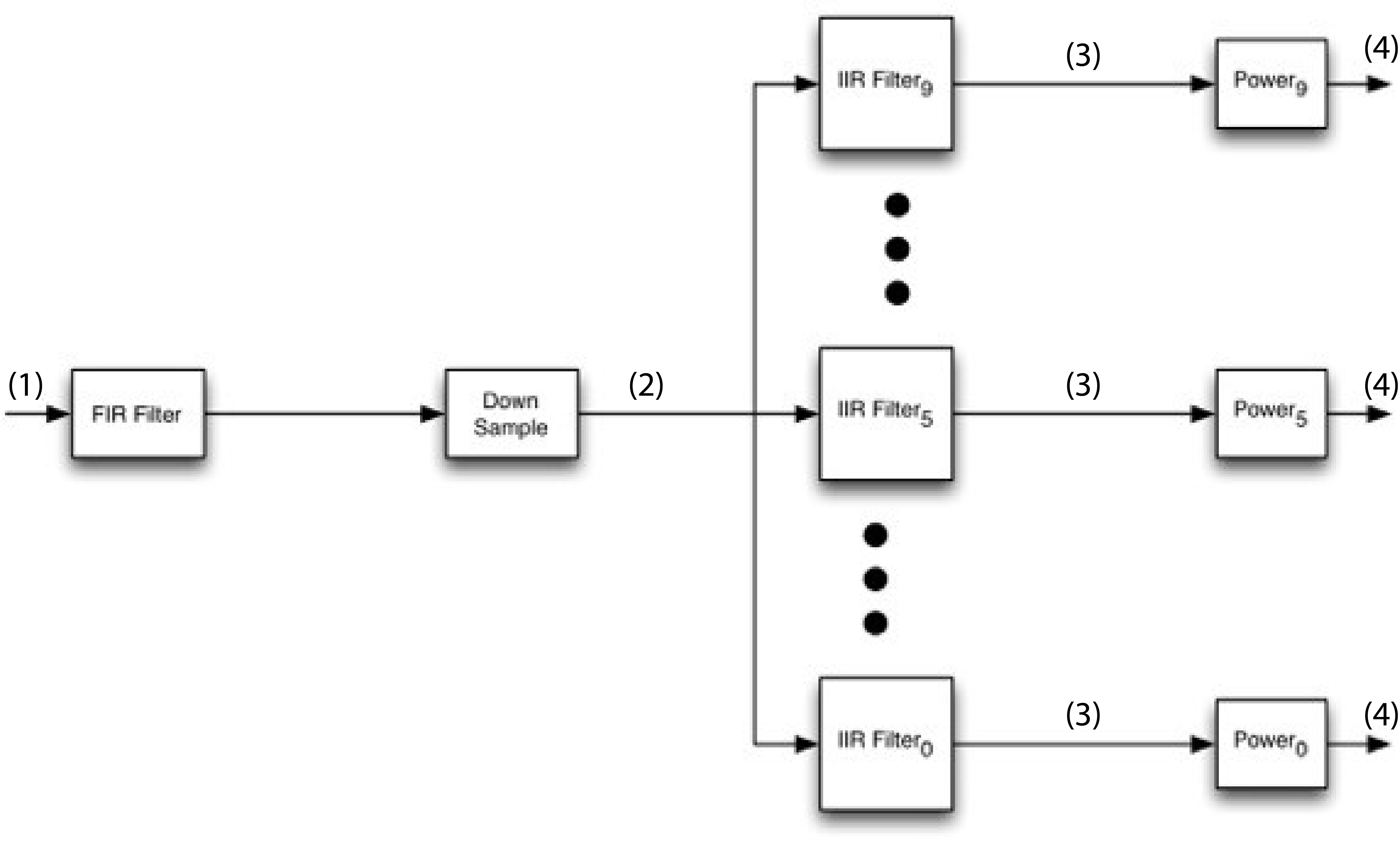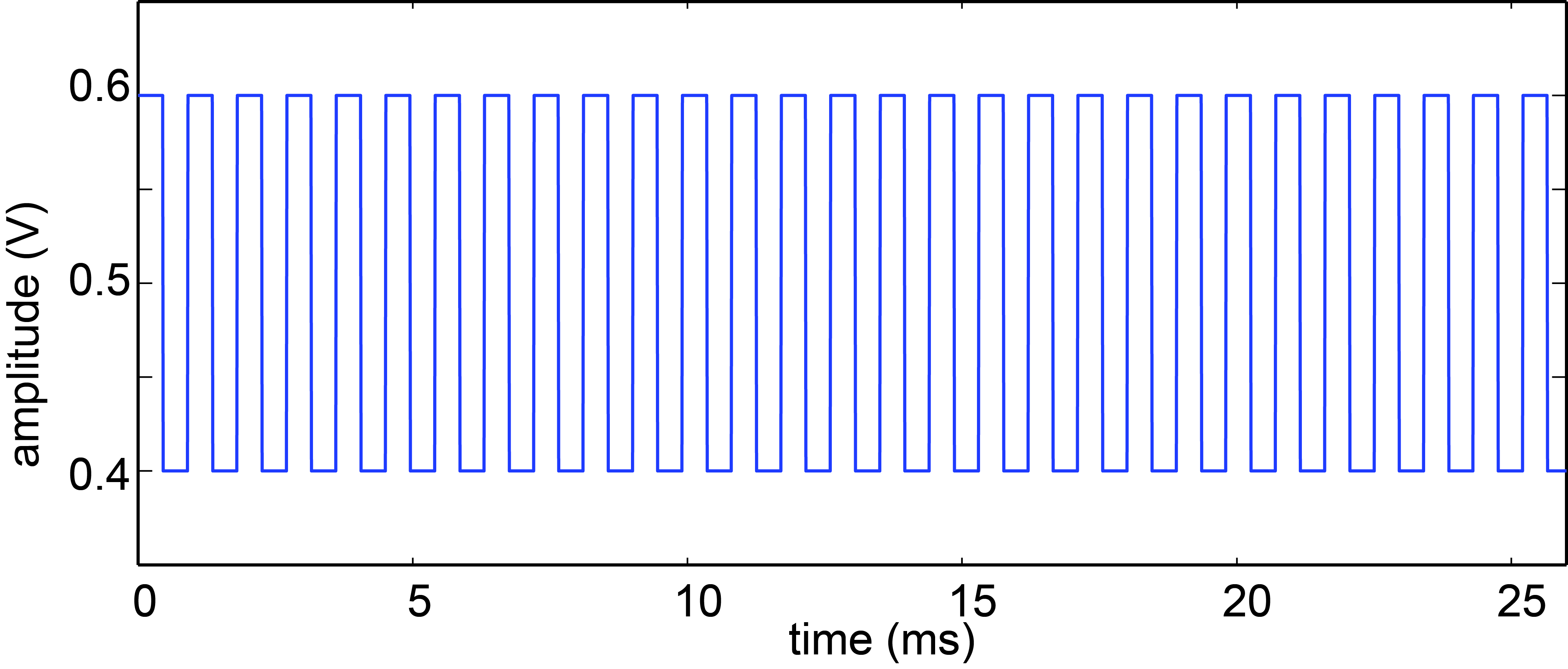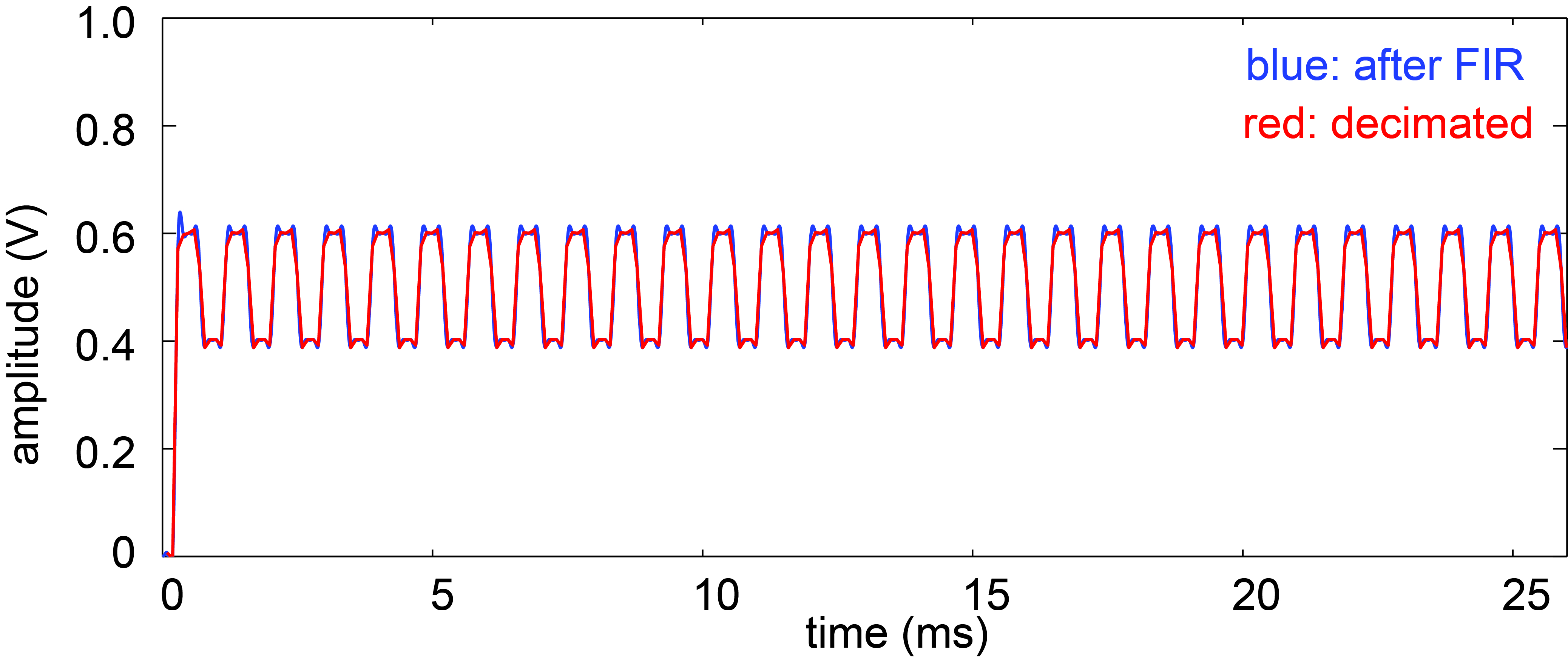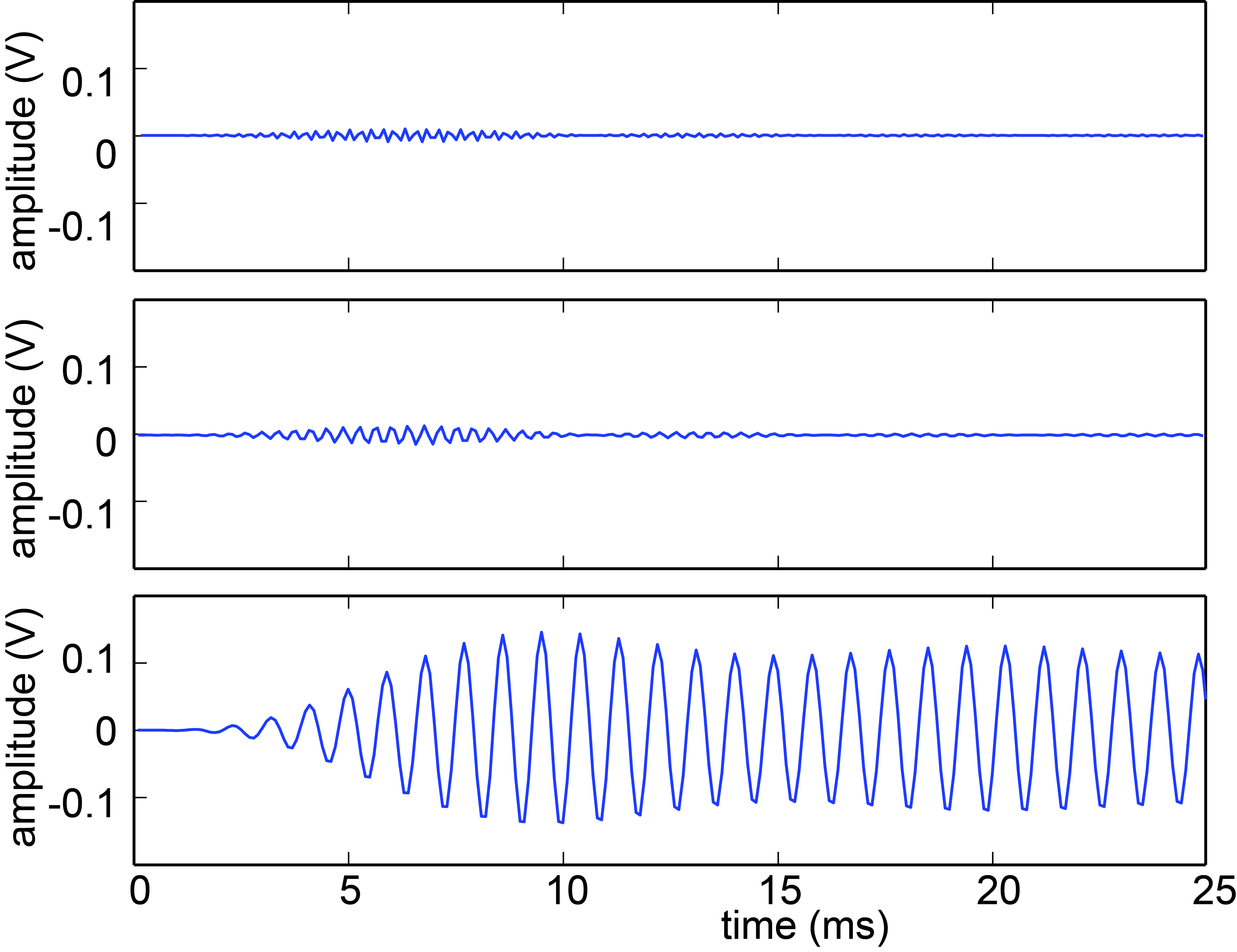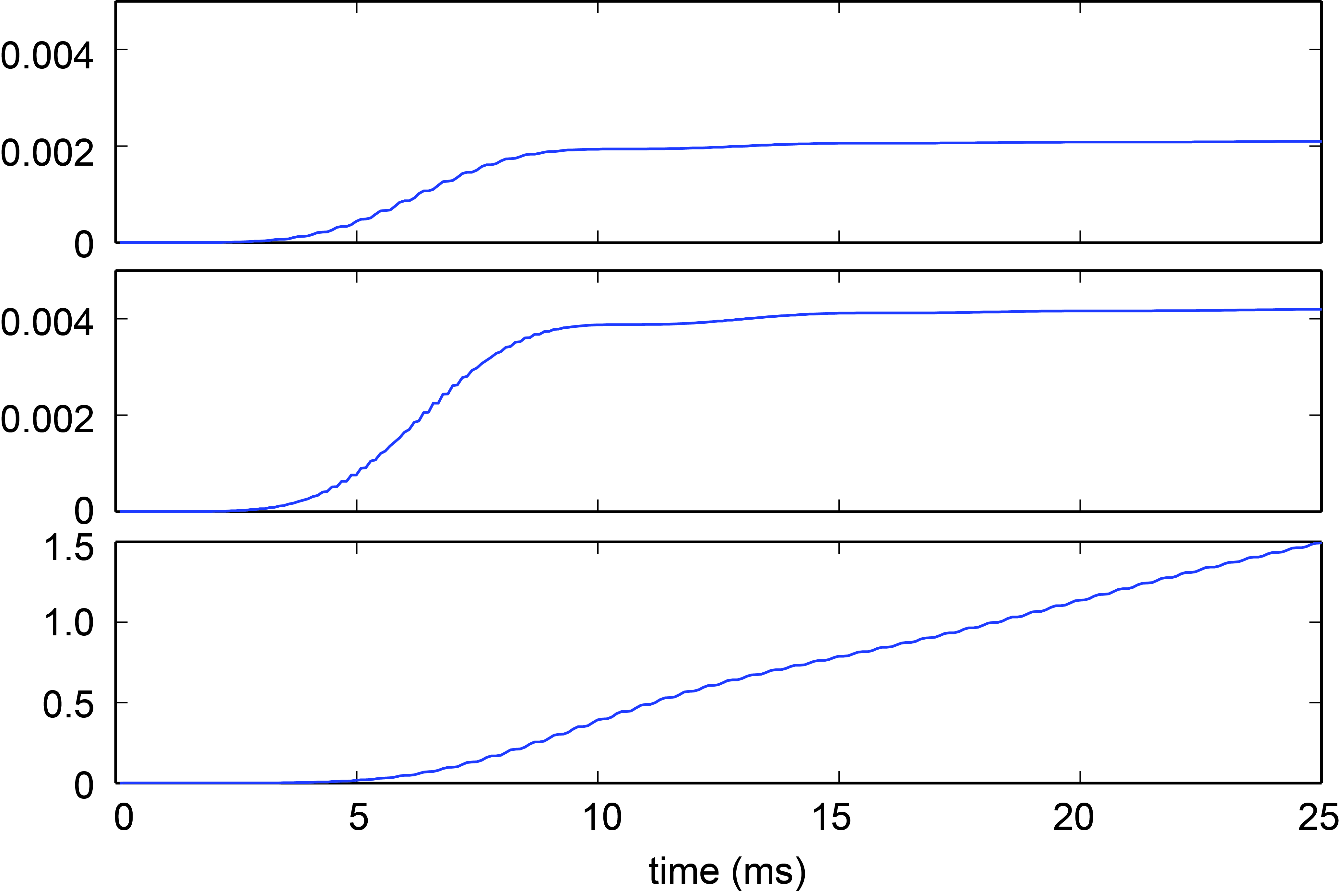User Tools
This is an old revision of the document!
System Plots
This is basic block diagram of the system.
The basic process is the following:
- Read numbers from the receiver board using the ADC at a rate of FS=100 kHz
- Low pass filter the samples (using an FIR filter)
- Down sample the data to a rate of FS=10 kHz
- Filter the data through the 10 bandpass filters (using 10 IIR filters)
- Compute a running power
To better understand this process let's look at what the data would look like at various points in the design. The following block diagram is a simplified version of the previous block diagram. In this block diagram the queues have been removed since those are related to the way that the data structures are implemented.
We are going to start by looking at a signal that is a square wave without any noise. This initial plot is at location (1) on the block diagram. This signal is a square wave with frequency of f=1111 Hz, amplitude of 0.2 V peak-to-peak, offset voltage of 0.5 V, and a sampling frequency of FS=100 kHz. We have zoomed in on the first 25 ms of time so that it is easy to see the square wave oscillations
The first block is the FIR low pass filter. The purpose of the low pass filtering is discussed in a separate low pass filtering page. After the low pass filtering the signal is down sampled to FS=10 kHz. In the actual system the FIR filtering and the down-sampling are accomplished at the same time.
This plot shows both the low pass filtering and the down sampled signal. This is labeled as point (2) in the block diagram. The filtering starts at 0 since the data is initialized at zero. It quickly follows the original signal.
The data is then passed through the 10 IIR bandpass filters. Rather than plotting all 10 signals this figure shows the signal after filters 0, 5, and 9. This is labeled as point (3) in the block diagram. The original signal is a square wave with a frequency that aligns with the frequency of filter 0. Notice that the amplitude of the signal out of Filter0 is close to the original amplitude and the output of the other filters is much lower.
By looking at the signal in the previous plot it is fairly easy for you to see which player shot. But you need to think about how your determined that it is the hit. Without actually realizing it you looked at the envelope of the signal.
Rather than simply grabbing the maximum it is better to do a power calculation. To calculate the power we square the signal and then compute a moving average. The following plot is of the power sum and is position (4) on the block diagram. Initially the signal is 0 and then starts to increase as more samples are summed. Since we are adding the square of the signal every new sample increases the sum. However, the increase is much greater for the signal that has the correct frequency. This plot shows that the signal to noise ratio (SNR) increases with the length of the summation. In this project the shot length is specified to be 200 ms, which corresponds to 2000 samples. Therefore, to get the best SNR the summation length should be 2000 samples.

